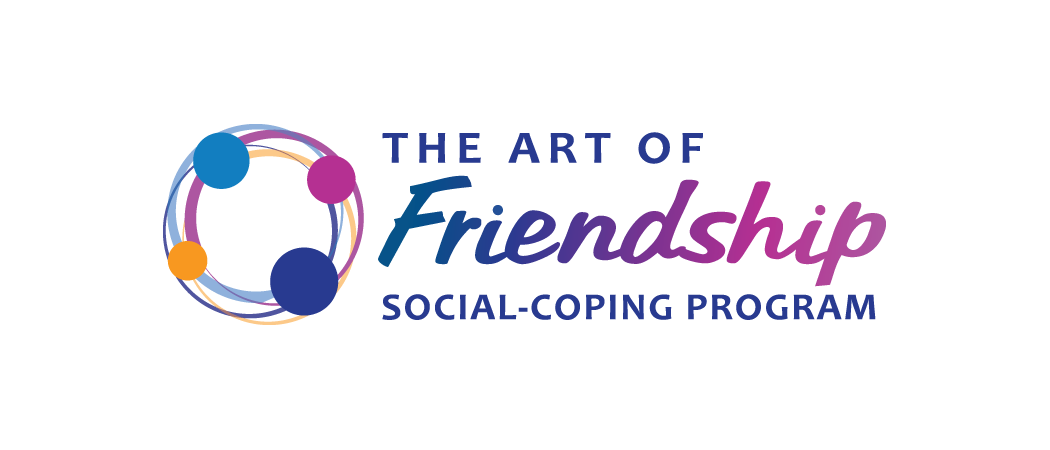Art of Friendship Social-Coping Tip #12: Conversation Tennis
Let’s use the metaphor of a FRIENDLY TENNIS GAME to explain the essence of CONVERSATION. In a FRIENDLY GAME OF TENNIS, the ball should BOUNCE BACK AND FORTH, and it’s fun when participants try to sustain long VOLLEYS. Participants make an effort to SERVE the ball over to their partner so it is reachable, and they hope their partner makes the effort to return the VOLLEY, and so on. The game is most rewarding when participants BOUNCE THE BALL BACK AND FORTH.
It can be hard to know how to start a CONVERSATION. Here’s how to do it…
Like tennis, a CONVERSATION needs a good SERVE. QUESTION WORDS are instant CONVERSATION SERVERS. Using the “wh-” questions you already know, ask people about themselves (see the image above). If you don’t know what to say after you answer someone’s question, use CONVERSATION BOUNCERS. CONVERSATION VOLLEYS are follow-up questions that get people adding details to their comments, and CONVERSATION SWITCHERS are ways to kindly change the subject when you and your partner exhausted the last topic.
The attached image shows many of the words that form the structure for BOUNCING THE CONVERSATION BACK AND FORTH like a tennis game. The following are scripts and options for initiating and sustaining RECIPROCAL CONVERSATION:
CONVERSATION STARTERS (SERVES): Who, what, where, why, when, how, Did you...?, Did you ever...?, Did you see...?, or What are you doing next...[weekend, vacation]? What did you do last...[weekend, vacation, camp]?
CONVERSATION BOUNCERS (RETURN VOLLEYS): BOUNCE THE CONVERSATION (hit the ball back to the other person) with a universal CONVERSATION BOUNCER, "How about you?"; "What did you think about...?"; "Did you like..?"
CONVERSATION VOLLEYS (KEEP THE BALL BOUNCING): Follow up questions: Who else…?, What else…?, Where else…?, How else...? Tell me more about…
CONVERSATION SWITCHERS (NEW GAME WHEN YOU FINISH A TOPIC): "That reminds me..."; "Do you mind if we change the topic to...?"; "And also..."
Caregiver reinforcement technique #1: Encourage your child to use the question words or phrases above and ask someone a question. Practice this over dinner or on car rides. Say, “Can you ask me a CONVERSATION QUESTION about my day or my interests?” Print the picture below and keep it nearby as a prompter.
One way to generate questions is to base your curiosity on personal interests, experiences, or knowledge. That way, your question serves two purposes. You can connect with others verbally and find out common interests. For example, if you are a fan of Marvel movies, you might ask, "Did you see The Avengers movie?". Listen to the person’s answer and ask at least one follow up question to demonstrate interest in them.
Caregiver reinforcement technique #2: Children sometimes give short/one-word answers to questions. They forget to BOUNCE THE CONVERSATION back to their partner. The game halts with your child “holding the ball”. Please encourage your child to use a CONVERSATION BOUNCER to pass the CONVERSATION back to the partner. "I loved the Avengers movie! I thought the coolest part was _________. HOW ABOUT YOU?" “WHAT DO YOU THINK?” Prompt your child, “Can you BOUNCE THE CONVERSATION back to me/your sister? Say, ‘How about…?’”
Caregiver reinforcement technique #3: After a topic has been talked about for ‘a while', encourage your child to use a CONVERATION SWITCHER to change topics smoothly and not jarringly. Prompt your child to begin a SWITCHER with, “That reminds me…” or “Do you mind if I change the topic?”
ONWARD AND UPWARD! — Mike Fogel

